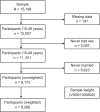Prevalence of pregnancy termination and associated factors among married women in Papua New Guinea: A nationally representative cross-sectional survey
- PMID: 39236064
- PMCID: PMC11376535
- DOI: 10.1371/journal.pone.0309913
Prevalence of pregnancy termination and associated factors among married women in Papua New Guinea: A nationally representative cross-sectional survey
Abstract
Background: Pregnancy termination or induced abortion is not decriminalized, and access to safe abortion services is largely unavailable in Papua New Guinea (PNG). However, the practice is common throughout the country. This study aimed to estimate the prevalence and determine factors associated with pregnancy termination among married women aged 15-49 years in PNG.
Methods: Secondary data from the 2016-2018 PNG Demographic and Health Survey (PNGDHS) was used. A total weighted sample of 6,288 married women were included. The Complex Sample Analysis method was used to account for the cluster design and sample weight of the study. Chi-square tests and multivariable logistic regression were used to assess factors associated with pregnancy termination. Adjusted odds ratios (aORs) with 95% Confidence Intervals (CIs) were reported.
Results: The prevalence of pregnancy termination was 5.3%. Nearly half (45.2%) of all pregnancy terminations occurred in the Highlands region. Women aged 35-44 years (aOR = 8.54; 95% CI: 1.61-45.26), not working (aOR = 6.17; 95% CI: 2.26-16.85), owned a mobile phone (aOR = 3.77; 95% CI: 1.60-8.84), and lived in urban areas (aOR = 5.66; 95% CI: 1.91-16.81) were more likely to terminate a pregnancy. Women who experienced intimate partner violence (IPV) were 2.27 times (aOR = 2.27; 95% CI: 1.17-4.41) more likely to terminate a pregnancy compared to those who did not experience IPV. Women with unplanned pregnancies were 6.23 times (aOR = 6.23; 95% CI: 2.61-14.87) more likely to terminate a pregnancy. Women who knew about modern contraceptive methods and made independent decisions for contraceptive use were 3.38 and 2.54 times (aOR = 3.38; 95% CI: 1.39-8.18 and aOR = 2.54; 95% CI: 1.18-5.45, respectively) more likely to terminate a pregnancy.
Conclusion: The findings highlight the role of sociodemographic and maternal factors in pregnancy termination among married women in PNG. Efforts aimed at reducing unplanned pregnancies and terminations should focus on comprehensive sexual and reproductive health education and improving easy access to contraceptives for married couples. Post-abortion care should also be integrated into the country's legal framework and added as an important component of existing sexual and reproductive health services.
Copyright: © 2024 Maviso et al. This is an open access article distributed under the terms of the Creative Commons Attribution License, which permits unrestricted use, distribution, and reproduction in any medium, provided the original author and source are credited.
Conflict of interest statement
The authors have declared that no competing interests exist.
Figures
Similar articles
-
Intimate partner violence as a determinant of pregnancy termination among women in unions: evidence from the 2016-2018 Papua New Guinea Demographic and Health Survey.J Biosoc Sci. 2024 Jan;56(1):141-154. doi: 10.1017/S002193202300007X. Epub 2023 May 22. J Biosoc Sci. 2024. PMID: 37211884
-
Prevalence and predictors of HIV testing among young men in Papua New Guinea: A cross-sectional analysis of a nationally representative sample.PLoS One. 2024 Aug 14;19(8):e0306807. doi: 10.1371/journal.pone.0306807. eCollection 2024. PLoS One. 2024. PMID: 39141635 Free PMC article.
-
Prevalence and determinants of not testing for HIV among young adult women in Papua New Guinea: findings from the Demographic and Health Survey, 2016-2018.BMJ Open. 2024 Mar 7;14(3):e075424. doi: 10.1136/bmjopen-2023-075424. BMJ Open. 2024. PMID: 38453195 Free PMC article.
-
What has women's reproductive health decision-making capacity and other factors got to do with pregnancy termination in sub-Saharan Africa? evidence from 27 cross-sectional surveys.PLoS One. 2020 Jul 23;15(7):e0235329. doi: 10.1371/journal.pone.0235329. eCollection 2020. PLoS One. 2020. PMID: 32702035 Free PMC article.
-
Exposure to interparental violence and justification of intimate partner violence among women in Papua New Guinea.BMC Womens Health. 2023 Mar 23;23(1):122. doi: 10.1186/s12905-023-02248-9. BMC Womens Health. 2023. PMID: 36959590 Free PMC article.
Cited by
-
Pooled prevalence of induced abortion and associated factors among reproductive age women in sub-Saharan Africa: a Bayesian multilevel approach.Arch Public Health. 2025 Jun 18;83(1):159. doi: 10.1186/s13690-025-01656-7. Arch Public Health. 2025. PMID: 40533838 Free PMC article.
-
Pregnancy Termination Among Women of Reproductive Age: Evidence from the Indonesian Demographic and Health Survey.Int J Environ Res Public Health. 2025 Apr 4;22(4):564. doi: 10.3390/ijerph22040564. Int J Environ Res Public Health. 2025. PMID: 40283789 Free PMC article.
References
-
- World Health Organization. Safe abortion: technical and policy guidance for health systems [Internet]. 2nd ed. Geneva: World Health Organization; 2012. Available from: https://apps.who.int/iris/handle/10665/70914 - PubMed
-
- World Health Organization. Abortion: Key facts [Internet]. 2021. Available from: https://www.who.int/news-room/fact-sheets/detail/abortion
MeSH terms
LinkOut - more resources
Full Text Sources
Medical



